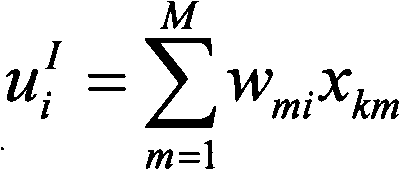Parallel magnetic resonance imaging GRAPPA (generalized autocalibrating partially parallel acquisitions) method based on machine learning
A technology of magnetic resonance imaging and machine learning, which is applied in the fields of instruments, measuring magnetic variables, measuring devices, etc., and can solve the problem of large deviation of reconstruction results.
- Summary
- Abstract
- Description
- Claims
- Application Information
AI Technical Summary
Problems solved by technology
Method used
Image
Examples
Embodiment Construction
[0018] Please refer to figure 1 The present invention discloses a GRAPPA method of parallel magnetic resonance imaging based on machine learning, which includes the following steps:
[0019] Collect K-space data sets from the object to be imaged;
[0020] Use regression analysis in machine learning to establish the mapping relationship between under-sampled points and their neighbors;
[0021] Predict the under-sampling points and fill the under-sampling K space;
[0022] According to the K-space data of each coil, the inverse Fourier transform is performed to obtain the image of each coil, and the square sum of multiple images is obtained to obtain the final reconstruction result.
[0023] For the first step above, the K-space data set includes self-calibration lines. The sampling method is the same as the traditional GRAPPA sampling method. The sampling mode is determined by the sampling rate and the number of calibration lines. It is assumed that there are 256 lines in the K-space ph...
PUM
 Login to View More
Login to View More Abstract
Description
Claims
Application Information
 Login to View More
Login to View More - R&D
- Intellectual Property
- Life Sciences
- Materials
- Tech Scout
- Unparalleled Data Quality
- Higher Quality Content
- 60% Fewer Hallucinations
Browse by: Latest US Patents, China's latest patents, Technical Efficacy Thesaurus, Application Domain, Technology Topic, Popular Technical Reports.
© 2025 PatSnap. All rights reserved.Legal|Privacy policy|Modern Slavery Act Transparency Statement|Sitemap|About US| Contact US: help@patsnap.com



